What do a top-tier international business school based in the capital of Europe and Pointerpro have in common? At the very least, an untameable desire to ignite the entrepreneurial fire in people. And what better way to spread that fire than by using digital channels?
Vlerick’s Learning Hub department does exactly that. Since 2022, our Pointerpro software and our professional services team have been helping them increase their impact. But don’t just take it from this intro. We sat down (digitally) with Learning Designer Anna Riepe and Learning Technologist Maud Van de Velde to get their view on Vlerick’s journey with Pointerpro.
- Digital innovation in entrepreneurship development: The Learning Hub at Vlerick
- Before Pointerpro: The emerging need for streamlined online assessments and reports
- Realizations with Pointerpro and Pointerpro’s professional services team
- The near future of working with Pointerpro and the professional services team
- Summarizing the journey with Pointerpro and tips for future users
Digital innovation in entrepreneurship development: The Learning Hub at Vlerick
Can you briefly introduce Vlerick and the department you’re part of at Vlerick?
Anna Riepe: Definitely. Vlerick is one of the leading Business Schools in the Benelux area with offices in different locations in Belgium. As you probably know, we’re quite international and what we really love is getting people who work in different roles and businesses to do better.
Our faculty are our content experts. They translate a lot of the research knowledge that’s around into very tangible ways for business people to do better in their organizations. Our particular department is called “The Learning Hub” and we help our faculty improve their teaching with the help of digital tools.
Can you give an example?
Anna Riepe: Sure. One example would be translating lectures that normally take place face-to-face into a self-paced online journey for the participants. But it can also entail VR or online assessments and surveys – which is what we’ll talk about today, isn’t it? So anything digital comes our way and then we help our content experts to better assess and get the results they want.
Very clear. And what are your specific roles?
Maud Vandevelde: So, our team is divided into various roles. Anna is a learning designer and I’m a learning technologist. That means I’m one of the builders who takes care of the technical side of things. Basically, I get the information that Anna processes and publish it online.
Anna Riepe: Yes. You could call me a project manager and translator. So I listen to our faculty and try to understand their ideas or concepts. Then I also take into account their dreams and wishes and translate those into something that’s technically possible. And other colleagues, like Maud, will go into the very technical side of building something with that input.
Before Pointerpro: The emerging need for streamlined online assessments and reports
Can you tell us more about the journey that led you to Pointerpro?
Anna Riepe: So, a good way to think of this is as a triangle. On one end we have our faculty, who are brilliant people with great ideas. They do all they can to make their learnings accessible to participants on the other end – so that these people can have more impact on their businesses. And then the third end of the triangle is our team that comes in to facilitate this.
So here’s an example. A faculty member tells us: “In my course, I’m talking about how to grow scale-ups and start-ups. But as a conversation starter I need to have a more objective assessment of where my participants are today. Because based on that, I can focus on the most relevant aspect, whether it be HR, or doing marketing, or cleaning up finances…”
So, a sort of diagnostic assessment?
Anna Riepe: Yes, it’s like a quick “scan”, based on a lot of questions – and then all of these scans compiled with different benchmarks, based on different research data. With that report, a faculty member knows what participants need to focus on to have a greater impact. That’s where we step in and say: “Great idea, but let’s talk about the details.”
Now, in the past, a lot of this happened on different platforms that required a lot of backend work in Excel spreadsheets and then required manual work to get it into a nice-looking report.
And so coming back to our triangle: We have faculty that comes with content, The Learning Hub needs to make it happen technically, and then we have our participants. They are not researchers or data nerds or anything. They’re people like you and me who need something visually attractive, clear, and clean. And we obviously want these reports to be branded. Bottom line: If the content is great but you can’t read it because it’s too complex, then it becomes a waste of time.
So, with a great idea, and data to validate important questions based on research, the remaining question was: How do we get from here to something participants can digest and translate into action?
And that’s why we went scouting on the market for options – and that’s where Pointerpro’s assessment tool came in.
Did you try other tools or systems before Pointerpro? And if so, where did they fall short?
Anna Riepe: I think we’re quite unique in our challenge. We’re not talking about insanely huge volumes of assessments, but we are talking about huge complexity. Why? Because we actually want to say something meaningful with the data we collect. It’s not like a simple form you create with Microsoft Forms to poll about who will require vegetarian food at a company event, right?
We’re talking about complex calculations, benchmarks, and the need to have this come together in a report. And there aren’t many real alternatives out there to achieve that. Plus, we want to have it automated as much as possible.
The system we had in the past required somebody in the backend, to download complex data into a CSV file, do manual calculations in Excel, and build a report from there.
Realizations with Pointerpro and Pointerpro’s professional services team
In 2022, Vlerick’s Learning Hub started working on a major assessment project, for the first time with Pointerpro: A Digital Maturity Scan. This is a series of three assessments, all designed to evaluate the digital competencies in an organization through a different lens – and ultimately Vlerick uses those findings for tangible conversations in the classroom and in coaching sessions.
- Digital Maturity Scan 1: Analyzing 8 key dimensions of digitalization (E.g. strategy, available technology, governance systems and structures, digital talent and skill development, etc.). The result is a report that benchmarks the responding organization against aggregated data from other companies.
- Digital Maturity Scan 2: A deep-dive assessment Identifying, analyzing, and prioritizing processes that need to be digitalized. The result is a report with actionable advice based on aggregated assessment responses from individual managers.
- Digital Maturity Scan 3: A deep-dive assessment of fundamental and advanced digital mindsets and skills that constitute a digitally mature company culture. The result is a group report that compares different units in the organization.
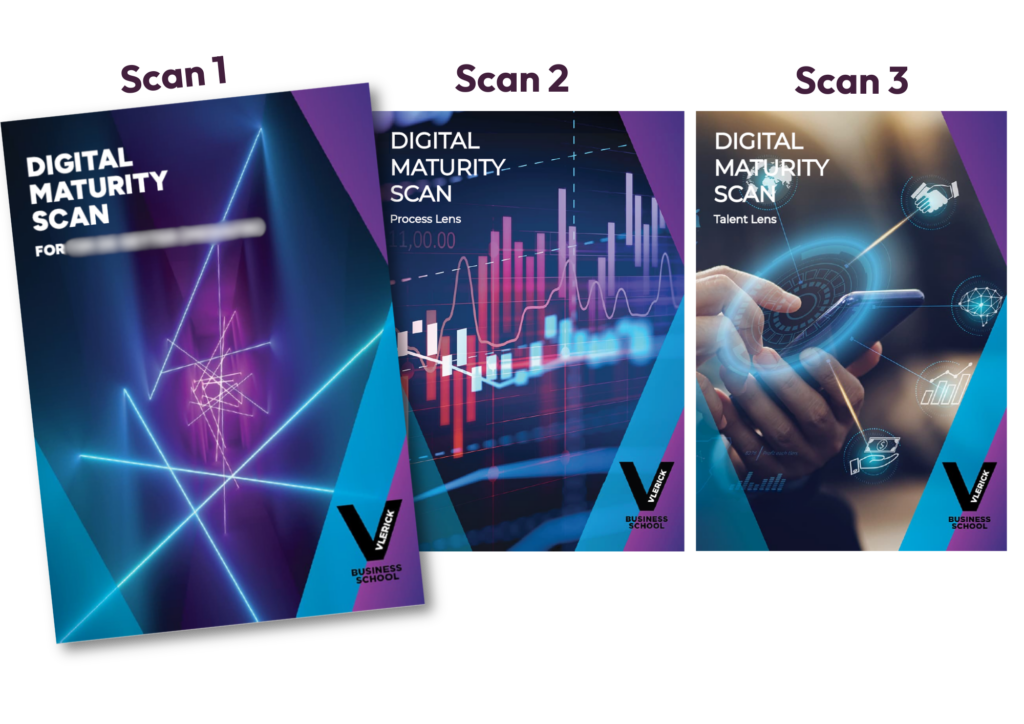
Because of the depth and complexity of this highly professional assessment project – and to fully prepare their Learning Hub team for undertakings of similar scope in the future, Vlerick chose to onboard Pointerpro’s professional services program.
The first of the three assessments is up and running. Digital Maturity Scans 2 and 3 are in the process of being finalized, to become fully operational soon.
Pointerpro professional services in a nutshell: The Vlerick case
The successful development of diverse assessments for their businesses has emboldened many Pointerpro users over the years to take on more and more ambitious assessment projects at the core of their business.
To accommodate this, Pointerpro has formed a professional services team to provide a top-tier level of assistance. The program includes the following services to which Vlerick has subscribed:
- Integration of elaborate external respondent databases
- Conceptual and technical development of highly complex conditional logic and score calculations
- Development of custom charts and report widgets
- Graphic design of fully and professionally branded questionnaires and reports
Within each professional service offering, the team integrates an iterative project management mechanism. This also incorporates a formal feedback loop upon project completion to validate that all of the predetermined objectives were delivered in full.
We asked Anna and Maud about their experience with Pointerpro as a software platform, but also – and especially – about how it has been to work with our Professional Services colleagues.
Anna Riepe: What I take out of the collaboration in my role as a project manager is that I really appreciated working with your colleagues. Sometimes you get to the limits of what you can technically do because it gets quite complex.
Also, sometimes our resources are just limited, and our faculty sometimes have wonderful ideas, but they are not always easy to translate. They may want a very specific type of spider chart or pull different kinds of data and benchmarks.
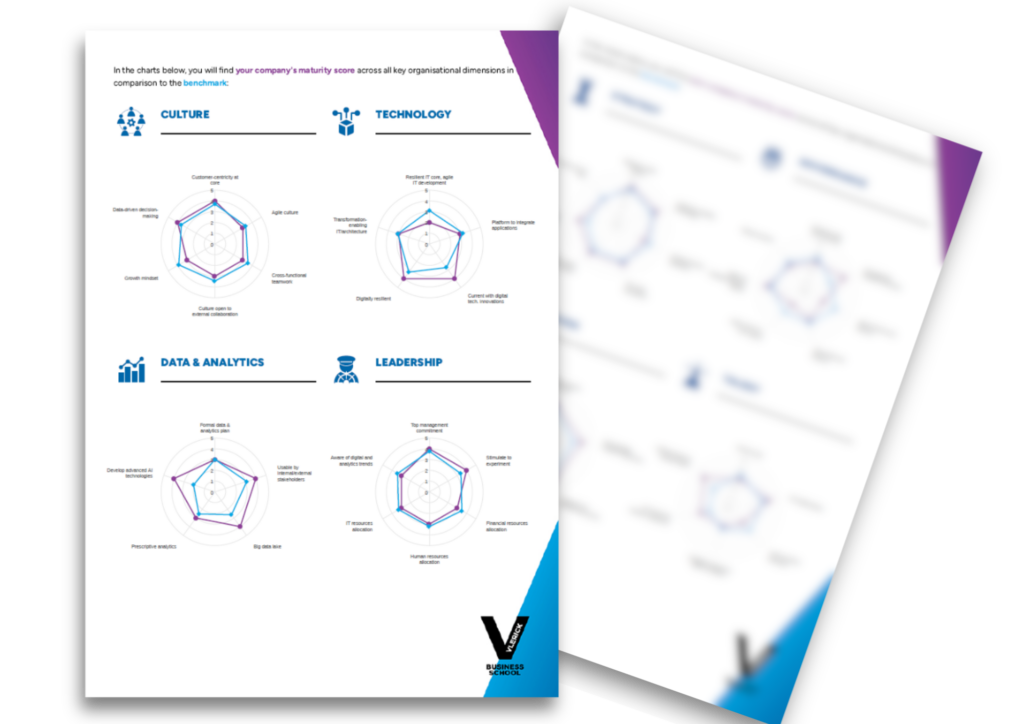
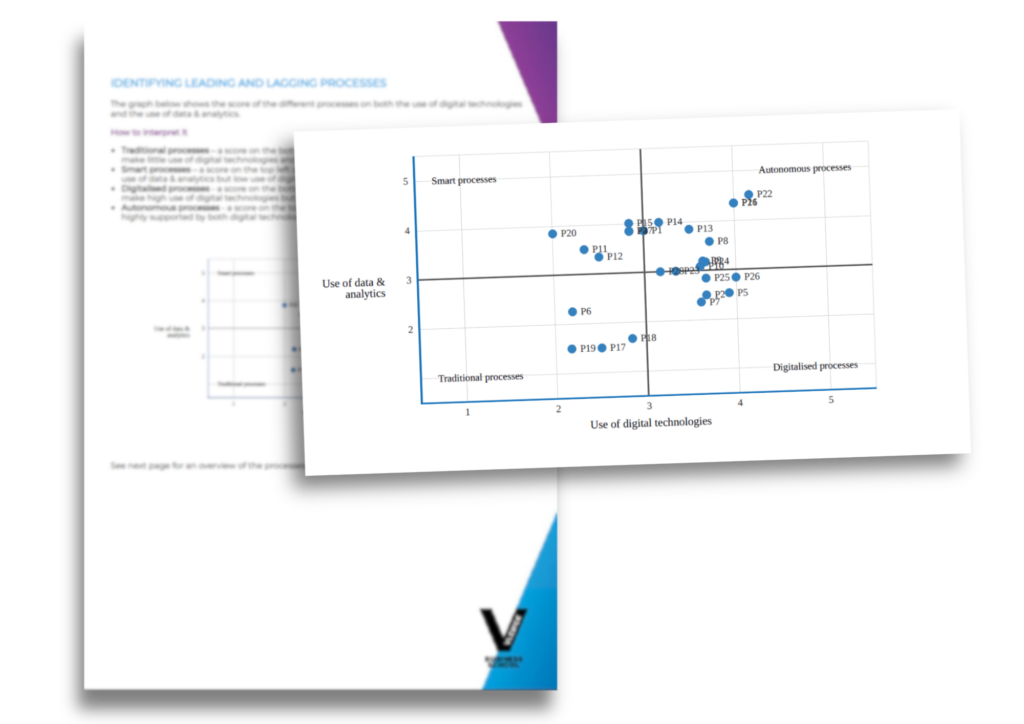
And so, then we call your colleagues, saying: “This is the idea and this is the data we have. How can we integrate this into the flow of our assessment, and ideally, after the final click get a beautiful graph with the right information into that PDF report of the participant?
And that’s always a great discussion. Your colleagues are really approachable to discuss these matters and to spend time to get into the nitty-gritty of the logic of our assessment. Bear in mind that every single project is different, the faculty behind it is different, the logic is different, the dataset is different… So it requires a lot of brainpower to delve into every single project. It’s not one project and then you just copy-paste. Every single one is different. And from there, they always find solutions – and the results really do look beautiful, don’t they Maud?
Maud Vandevelde: Yes, absolutely, I think so too!
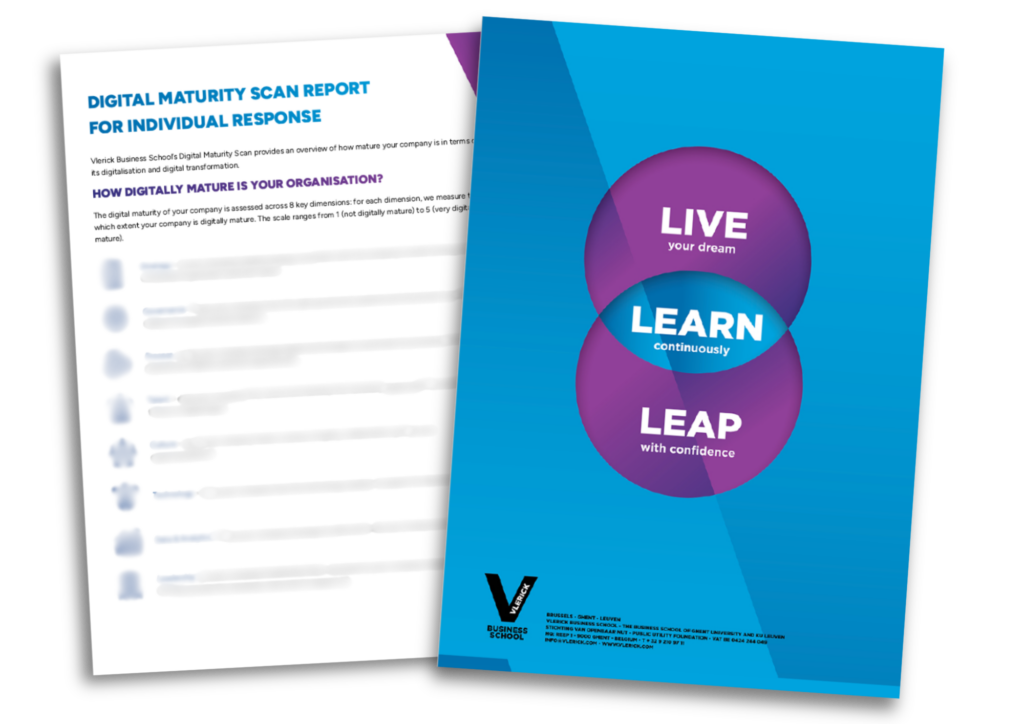
The near future of working with Pointerpro and the professional services team
From a technical perspective you’re in a transitional phase at the moment, aren’t you?
Maud Vandevelde: Well, right now the calculations are sometimes so very complex that we use an external tool.
Now, as we speak, we’re looking into the newest Pointerpro feature called Aggregate Reports. This will hopefully eliminate those very complex external calculations. Even though it works quite nicely to do the calculations today, we still prefer not to have an extra tool involved and have it all centralized in Pointerpro. It’s more robust and of course, it makes the flow even more automated.
Speaking of which, Maud. You’re currently using our sandbox offer to get acquainted with advanced features like Aggregate Reports. Anything else you can share about that?
Maud Vandevelde: Yes, I’m working on an assessment called the “Adaptive Capability Scan” which basically evaluates how agile you are and can become as an organization.
So, it looks at different dimensions and one – for instance – is “awareness.” We have a certain number of questions linked to that specific dimension. The assessment reports on your personal average, compares it to your company’s average, or the average of your classroom group, and then gives the overall benchmark analysis of the dimension of awareness.
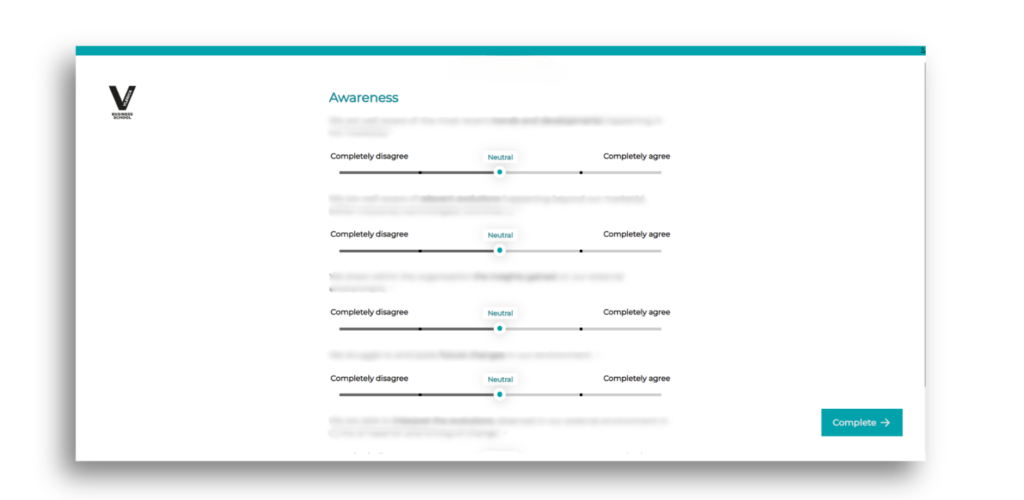
The calculations are again quite complex. Plus, we’re trying to set up an industry benchmark as well. But for certain industries we don’t have enough data yet to be representative. So, we want to combine benchmarks first, and as soon as we have sufficient data we want to be able to take this apart again into different industries.
Sounds like you have your work cut out for you. Is our professional services team helping?
Maud Vandevelde: I was in contact with Seppe last Friday and he really helped me to make sure the flow was correct and he’s now looking into setting up predefined filters. And he’ll get back to me because it could really help us in the future.
You should know that I get the input from Anna and build the solution, but afterwards, it also gets into the hands of other colleagues in different departments who need to take the process further. So there will be a learning curve for them and so the less complex we can make it for them, the better.
Anna Riepe: What I think is remarkable for any of the Pointerpro projects I’ve been involved in – compared to a lot of other companies – is that there is the space to meet face to face.
For example, we had a very nice meeting with some of your colleagues a few weeks back just to look at where things are, what’s on the roadmap of Pointerpro, what are needs from our side, and how these things may be synchronized. And in that meeting, one of us said: “We have this complex assessment we’re working on. Could we also go through that together now?” And this type of thing always seems to be possible with your professional services colleagues, which is very much appreciated.
Maud Vandevelde: Yes indeed. I sent a message the other day to Seppe and he answered me the day after and told me: “I have two days with availability…” and it was actually the same week that I could have an extensive call with him.
And that’s really nice to have someone to re-clarify things sometimes – because it’s a really sophisticated tool with a lot of functionalities and new features. So yes, it’s really nice that we’re getting in contact and getting answers quite fast.
That’s very nice to hear…
Anna Riepe: …and by the way, when it comes to the easier assessments – as I said, my role is more to manage the projects – I did create one myself that was very small, but still fully automated with some calculations coming together… And I managed it.
So it’s nice to see that for the easier things, it’s quite intuitive to get where I need to be, and for the really complex stuff your colleagues are around.
Maud Vandevelde: I think that says a lot. Anna just went into the tool and she made a – simple, but great-working assessment. That says a lot about the tool.
Also important to mention is that besides the fact we have such great contact with the Pointerpro team directly, I also make very good use of the support pages. It’s a great log where you can find answers to your questions or freshen up your memory. So I also really like that.
Summarizing the journey with Pointerpro and tips for future users
Is it possible to summarize your journey of using Pointerpro-built assessments into a concrete result?
Anna Riepe: I think that’s very tricky because some of the assessments already existed in the past. And the ones we’ve re-built with Pointerpro so far are based on the same content and work we did manually in the past.
However, some that exist are new – because using Pointerpro definitely gives you ideas. So one of the results surely is: We re-create an old assessment in Pointerpro, faculty members proudly tell everyone else about it…
…and then another faculty member says: “Oh I also have an idea. Can we do one here? Let’s get working on it! Let’s do another one!” or “Let’s develop new datasets.” or “Oh, I think this chart I saw looked so great. I also want to have that in my assessment!” So that’s a nice effect of simply having better and better material.
And that’s the overall objective, right? We’re here to make sure the assessments we use and the reports our participants get are top-notch. Faculty helps us make sure the content is right and meaningful, and your tool is there to translate findings into digestible and attractive reports.
Fantastic. To finish up: Do you have any tips for future Pointerpro users who take on similar scopes of projects?
Anna Riepe: I’d say the project management recommendation would be to always clear up first internally what you actually want to build, with whoever is involved. Really ask enough questions. Build in quite some testing time – not because the tool doesn’t do the calculations right, but because faculty is very busy and when they’re testing, they tend to come up with new ideas – and so otherwise you have no more buffer zone.
And of course, don’t hesitate to work with Pointerpro’s professional services team. Sometimes you may have a brilliant idea but you don’t see how to make it happen, and they actually might find a great workaround. Or for whatever reason: If you don’t have the resources, just hand over that project. They’ll do a very good job. Or if there are any other questions, I’d definitely consider them.
Maud Vandevelde: From my side it would be to first try mini-versions of your questionnaires. When I first started building, I immediately built the whole questionnaire of 50 questions – in all its complexity. And then faculty would want to change wordings or I’d realize one type of logic wasn’t working.
It’s always better to first test with a couple of questions. For instance, with the “Adaptive Capability Scan” that analyzes different dimensions – which I talked about earlier – I just get one dimension right first, because I know for the other dimensions it will be the same calculation.
Some pearls of wisdom I’m sure our newest users will appreciate. Thank you both so much for this interview!
Anna Riepe: You’re welcome!
Maud Vandevelde: With pleasure!


